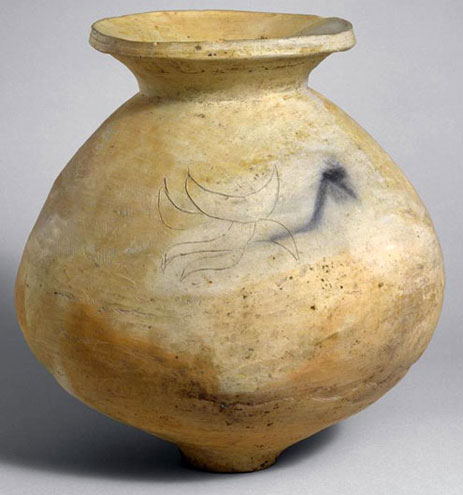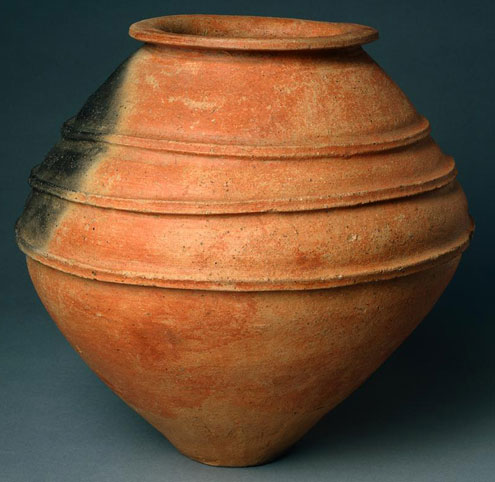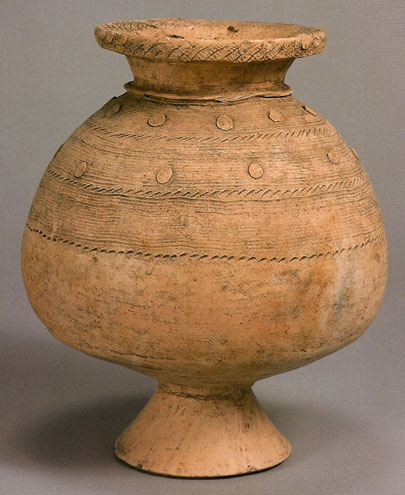

YAYOI PERIOD
The pottery of the Yayoi Period (250 B.C.E. - 250 C.E.) is much different than that of the Early through Late Jomon Period. Yayoi pottery is less decorated, lacking luster and appears more like its original makeup. Moreover, the Yayoi people were ethnically different from the original Jomon people, most likely arriving in Japan from the Korean peninsula. As a result, the differences in Yayoi pottery are also due in part to the influence of this new of people.
|
|
 |
 |
| STORAGE: This jar was made in the Late Yayoi period (100-300 C.E.). Although it is incised with a decoration, the jar is a prime example of the Yayoi potters' preference of an imperfect, natural style. | COOKING: This utilitarian urnished jar is from the Middle Yayoi PEriod ( 100 B.C.E.-100 C.E.), possibly used for cooking/storage. |
|
OFFERINGS: This high-footed jar is from the Late Yayoi period (100-200 C.E.). Having thin disks on its side, it is much more decorated compared to other Yayoi pots. It was used for some kind of ceremony. Similar jars known as "palace-style" ware are painted red. |
<<Previous: JOMON PERIOD | Next: KOFUN PERIOD>>






